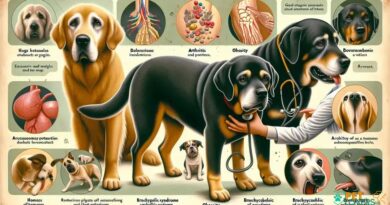What is kitchen safety for dogs
Understanding Kitchen Safety for Dogs
Kitchen safety for dogs is an essential aspect of pet ownership that ensures your furry friends remain safe while navigating the often hazardous environment of a kitchen. Dogs are naturally curious creatures, and their inquisitive nature can lead them into dangerous situations if proper precautions are not taken. Understanding the potential risks and implementing safety measures can significantly reduce the likelihood of accidents.
Common Kitchen Hazards for Dogs
There are numerous hazards in the kitchen that can pose a threat to dogs. Sharp objects like knives and scissors, hot surfaces such as stovetops and ovens, and toxic substances like cleaning supplies are just a few examples. Additionally, food items that are safe for humans may be harmful or even fatal to dogs, including chocolate, grapes, and onions. Awareness of these dangers is the first step in ensuring kitchen safety for dogs.
Securing Food and Ingredients
One of the most critical aspects of kitchen safety for dogs involves securing food and ingredients. Always store food items in sealed containers and keep them out of reach of your pets. This not only prevents your dog from accessing harmful foods but also helps maintain the freshness of your ingredients. Additionally, be mindful of food scraps that may fall to the floor during meal preparation, as these can attract your dog and lead to accidental ingestion of unsafe items.
Safe Cooking Practices
When cooking, it is vital to adopt safe practices that protect both you and your dog. Keep your dog out of the kitchen while you are cooking to prevent accidents. If your dog is accustomed to being near you, consider using a baby gate or crate to keep them safely away from hot surfaces and sharp utensils. This practice not only ensures your dog’s safety but also allows you to focus on cooking without distractions.
Proper Disposal of Food Waste
Proper disposal of food waste is another crucial aspect of kitchen safety for dogs. Dogs are often attracted to garbage cans and compost bins, where they may find harmful food scraps or sharp objects. Invest in dog-proof trash cans with secure lids to prevent your dog from rummaging through waste. Additionally, educate family members about the importance of disposing of food waste safely to minimize risks.
Identifying Toxic Foods
Being aware of toxic foods is vital for maintaining kitchen safety for dogs. Many common foods that humans enjoy can be dangerous for dogs. For instance, chocolate contains theobromine, which is toxic to dogs, while grapes and raisins can cause kidney failure. Familiarize yourself with a comprehensive list of foods that are harmful to dogs and ensure that these items are never left within their reach.
Creating a Dog-Friendly Kitchen Environment
Creating a dog-friendly kitchen environment can significantly enhance kitchen safety for dogs. Consider designating a specific area in the kitchen where your dog can safely stay while you cook. This space should be free from hazards and equipped with their favorite toys or a comfortable bed. By providing a safe space, you can keep your dog occupied and away from potential dangers.
Training Your Dog for Kitchen Safety
Training your dog to understand kitchen boundaries is an effective way to promote kitchen safety for dogs. Teach commands such as “stay” or “leave it” to help your dog learn when they should not enter certain areas. Positive reinforcement techniques, such as treats and praise, can encourage your dog to follow these commands, making the kitchen a safer place for everyone.
Regular Safety Checks
Conducting regular safety checks in your kitchen is essential for maintaining a safe environment for your dog. Periodically inspect your kitchen for potential hazards, such as loose cords, sharp objects, or toxic substances that may have been overlooked. By staying vigilant and proactive, you can ensure that your kitchen remains a safe space for your furry companion.
Emergency Preparedness
Finally, being prepared for emergencies is a critical component of kitchen safety for dogs. Familiarize yourself with the signs of poisoning or injury and have the contact information for your veterinarian readily available. Additionally, consider keeping a pet first aid kit in your home. Being prepared can make a significant difference in ensuring your dog’s safety in case of an emergency.




